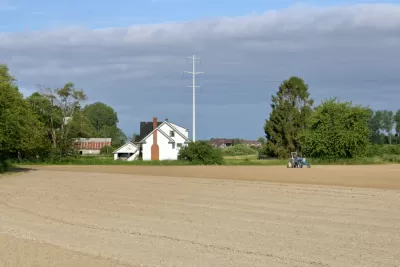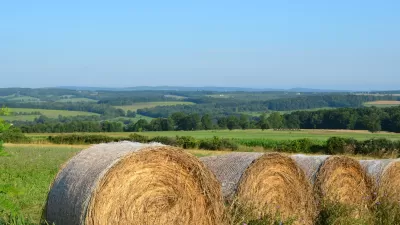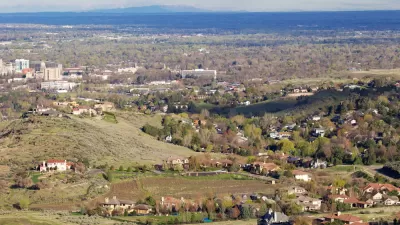Farmers around Vancouver's Agricultural Land Reserve have been building "mega-mansions" on their farmland. The province wants to limit the scale of such homes, but farmers are pushing back.

"In Metro Vancouver, where stress over property prices permeate every facet of life, even farmland is part of the increasingly contentious debate. The focus: 'mega mansions' built on arable land," reports Melanie Green.
More specifically: "The province tabled a bill two weeks ago outlining significant changes to the Agricultural Land Reserve — a collection of land spanning roughly 5 million hectares, dedicated in 1973 to the prioritization and protection of agriculture — to include a mandate capping the size of so-called 'monster homes.'"
The province hopes the legislation will ease the barrier for entry to the profession for farmers and protect the sustainability of the Agricultural Land Reserve. A coalition of opponents, representing 1,500 farmers and called the BC Farmland Owners Association (BCFOA), argues the legislation would have a negative impact on farming families.
The article includes more details about the political context for the legislation, and some of the controversies that preceded the current situation. Further debate on the bill is expected in committee this week.
FULL STORY: Farmers petition B.C. over plans to curb ‘mega mansions’ on agricultural land amid speculation debate

Planetizen Federal Action Tracker
A weekly monitor of how Trump’s orders and actions are impacting planners and planning in America.

Map: Where Senate Republicans Want to Sell Your Public Lands
For public land advocates, the Senate Republicans’ proposal to sell millions of acres of public land in the West is “the biggest fight of their careers.”

Restaurant Patios Were a Pandemic Win — Why Were They so Hard to Keep?
Social distancing requirements and changes in travel patterns prompted cities to pilot new uses for street and sidewalk space. Then it got complicated.

Platform Pilsner: Vancouver Transit Agency Releases... a Beer?
TransLink will receive a portion of every sale of the four-pack.

Toronto Weighs Cheaper Transit, Parking Hikes for Major Events
Special event rates would take effect during large festivals, sports games and concerts to ‘discourage driving, manage congestion and free up space for transit.”

Berlin to Consider Car-Free Zone Larger Than Manhattan
The area bound by the 22-mile Ringbahn would still allow 12 uses of a private automobile per year per person, and several other exemptions.
Urban Design for Planners 1: Software Tools
This six-course series explores essential urban design concepts using open source software and equips planners with the tools they need to participate fully in the urban design process.
Planning for Universal Design
Learn the tools for implementing Universal Design in planning regulations.
Heyer Gruel & Associates PA
JM Goldson LLC
Custer County Colorado
City of Camden Redevelopment Agency
City of Astoria
Transportation Research & Education Center (TREC) at Portland State University
Camden Redevelopment Agency
City of Claremont
Municipality of Princeton (NJ)




























